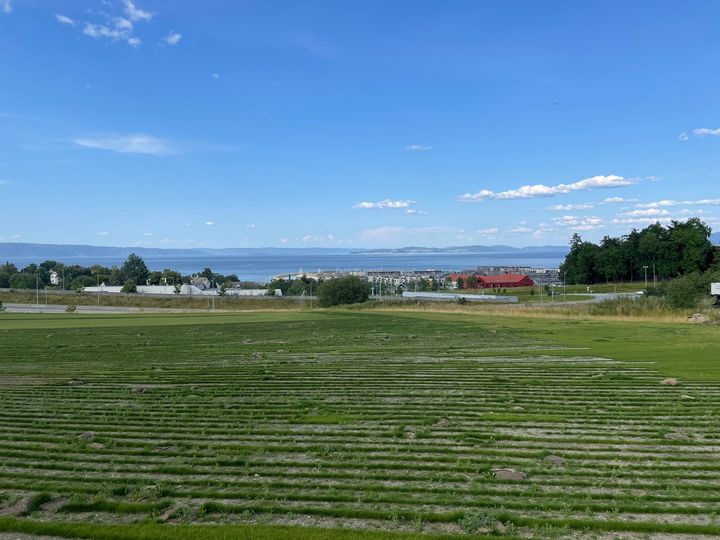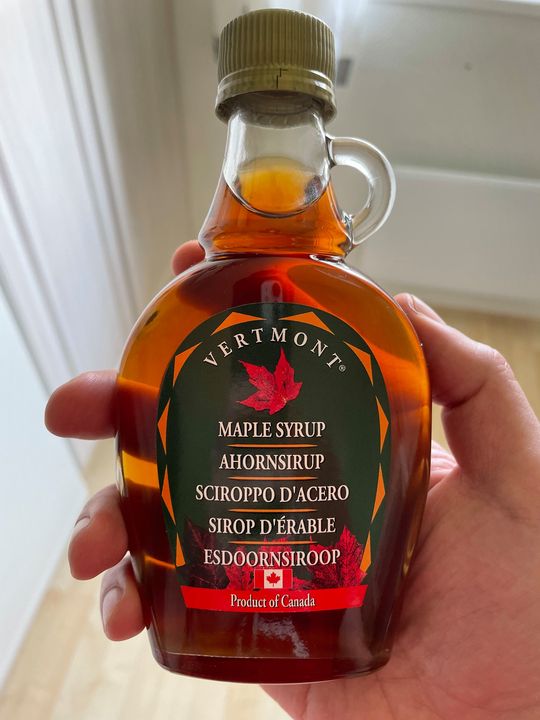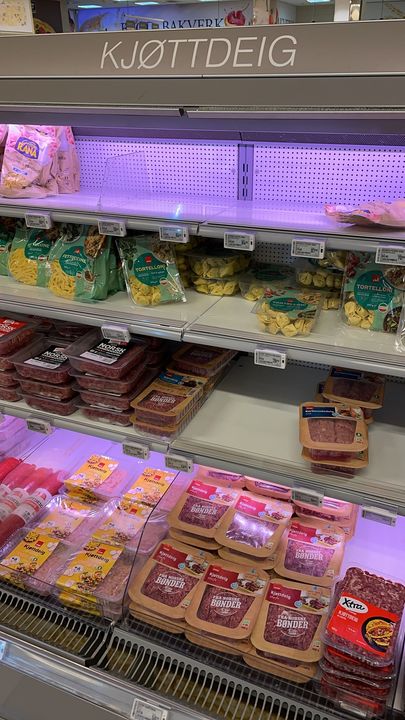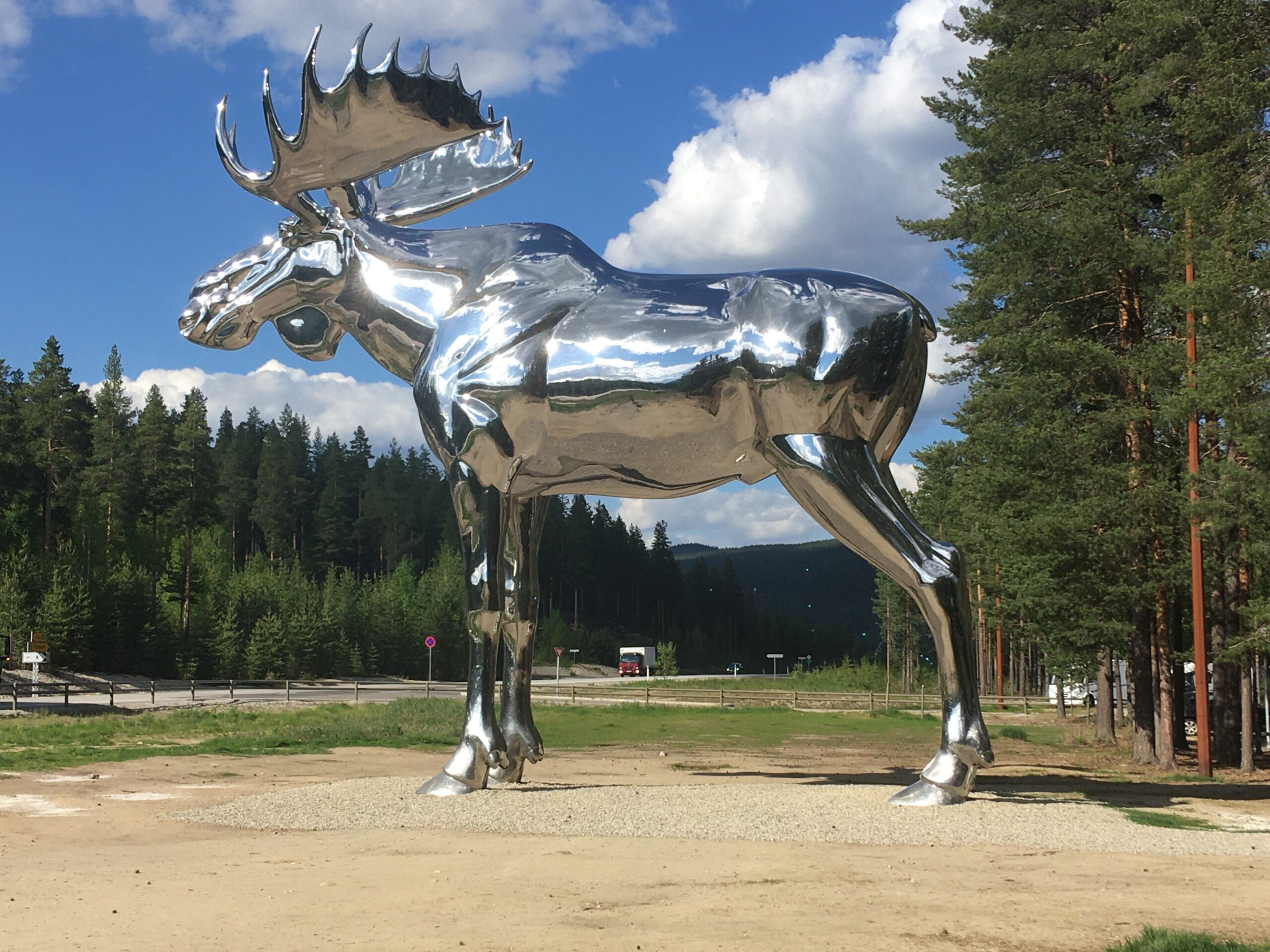So after I got my key, moved in, unpacked my two suitcases, and sat for a minute, just breathing, realizing I had finally made it to my apartment in Norway, that I was really here, I realized something rather important. At some point today, I will need toilet paper. I knew there was a grocery store the next street over, and the landlord had even shown me a shortcut between two houses that cuts off half the distance. The problem was that my poor dog had had enough moving around the last few weeks and had basically glued herself to my leg. Eventually, I convinced her into her crate, and set up a camera to record. I couldn’t monitor her live, because my apartment had no internet service yet. I left, listened for a moment, and since I heard nothing, walked as quickly as I could to the store.
At the store, I found toilet paper, paper towels, a frozen pizza, a few other odds and ends, and head to the checkout line. I had probably only been gone about fifteen minutes at that point. Not bad. The cashier ringed me up, asked me if I want a bag (“Pose?” “Nei, takk”), and told me the cost, too fast for me to understand, but probably below the credit limit on my card. So I tapped my card to pay, and she said something in Norwegian. “Must not work that way,” I thought to myself, so I inserted my card into the chip reader and the cashier said something to me in Norwegian. That also failed, so I tried another card, and the cashier started to get frustrated now because she’s been repeating herself in Norwegian. So finally I told her “Beklager, jeg snakker ikke norsk, snakker du engelsk?” and she said “OH! I’m sorry. The card machine isn’t working. Do you have Vipps?” To have Vipps, you need a Norwegian bank account, and to get one of those you need an ID number and a residence card, which is a whole separate story.
So I told her no, I don’t have Vipps, and she asked if I had cash. It was at this moment I remembered my dad saying at the airport in Newark, “Don’t you want to go to the exchange and get some Norwegian money before you go?” and my reply “No, I should be able to find an ATM when I get there.” Of course, the quarantine hotel was a cashless facility, and by the time I got to Trondheim I forgot that the little cash I had was in USD.
The cashier started putting my things aside and told me I would have to go get cash somewhere. So I sprinted out of the store, across the street to a gas station. The attendant there looked at me like I had five heads and told me to try the shopping mall a couple blocks away. So I sprinted to the shopping mall, an overwhelming mix of random Norwegian storefronts and chit-chatting and hand sanitizer, and powerwalked through the crowd, trying to find anything that looked like an ATM or a directory. Thankfully, the only English word on the directory was “Minibank,” so that one resolved itself rather quickly. I located the ATM, stepped in front, pulled out my card, jammed it in, and realized I have no idea what the PIN for this card is since I only use it for international travel.
I stamped my foot, sighed, guessed something random, and get denied. Frustrated, I hit cancel, spun on my heel, and started to walk off, when I realized a line of people was standing behind me, so either I had just cut the line or five other people all wanted to use the minibank immediately after I did. A short, older woman was next in line. She said something to me in Norwegian, and I replied in English, frustratedly throwing up my hands, saying “I’m sorry, I don’t know what’s going on, I’m bad, it doesn’t work, I need a minute.” and stepped back across the aisle to let her do her banking. I pulled out my phone to look up the PIN for the card.
Then, EVERYONE IN LINE started yelling at me in Norwegian. Finally one of them realized the futility of this and said, “Your card! You forgot your card!” And the older woman collected it from the machine and handed it to me. I thanked her profusely, still speaking English because at that point my brain was fried, and hopped back in line.
I got through the line, and picked the second largest amount of kroner to withdraw, because I figured that probably covers whatever I had just tried to buy at the grocery store. I know in theory the conversion rate is somewhere around eight to one, but dividing by eight after sprinting a few blocks and juggling languages wasn’t happening. The ATM spat out some colorful slips of paper with pictures of boats and lighthouses and stuff, I remembered to take my card this time, and I sprinted back to the grocery store.
At the store, I found that the dutiful store workers had already put back most of my things, except, thankfully, the toilet paper. So I told the cashier to keep that there while I ran around and grabbed more random stuff I remember needing. I handed the cashier a slip of paper and got back some different-colored slips of paper plus some coins, toilet paper, and groceries. When I returned home, I had been gone more than an hour, and my poor dog had howled every ten minutes like clockwork.
Later that evening, an amazing and wonderful coworker with a car agreed to meet me at IKEA and walk my dog for me so I could get a mattress to sleep on that night. I told him the saga of the toilet paper grocery run, and he laughed. “Welcome to living in a foreign country. You’ll have quite a bit more of those.”



